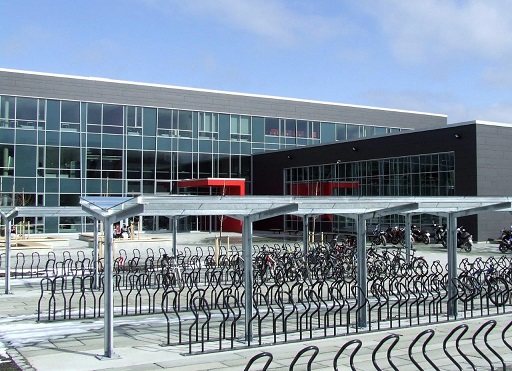Location tendencies for new secondary schools and arguments put forward for city centre location
DOI:
https://doi.org/10.7577/formakademisk.767Keywords:
Location, city centre location, new secondary schools, school facilities, arguments, learningAbstract
There is a growing tendency in Norway to build new secondary schools in the city centre. Collected information about the location of the most recent school facilities, and school facilities that are going to be built, confirms this. In this article, I ask why the city centre is a preferred choice of location, and I analyse the arguments put forward for city centre location. When it comes to students’ choice of secondary schools, it shows that they prefer city schools. “The Education Association” in Oslo has requested pedagogical reasons why several secondary schools are now being located in the city centre. It should be expected that a learning perspective or educational perspectives would be emphasised in arguments for the centre location of new school facilities. However, it seems that some of the arguments are based on the needs of external users, or that different stakeholders value the potential synergies. Some driving forces claim that secondary schools must be located in the city centre to strengthen the trade activity and café business. The article discusses challenges related to the point that schools, which primarily should be good learning contexts for students, apparently are so much more than just schools.

Downloads
Additional Files
Published
How to Cite
Issue
Section
License
Authors who publish with this journal agree to the following terms:
- Authors retain copyright and grant the journal right of first publication with the work simultaneously licensed under a Creative Commons Attribution 4.0 License that allows others to share the work with an acknowledgement of the work's authorship and initial publication in this journal.
- Authors are able to enter into separate, additional contractual arrangements for the non-exclusive distribution of the journal's published version of the work (e.g., post it to an institutional repository or publish it in a book), with an acknowledgement of its initial publication in this journal.
- Authors are permitted and encouraged to post their work online (e.g., in institutional repositories or on their website) prior to and during the submission process, as it can lead to productive exchanges, as well as earlier and greater citation of published work (See The Effect of Open Access).
- The author(s) must manage their economic reproduction rights to any third party.
- The journal makes no financial or other compensation for submissions, unless a separate agreement regarding this matter has been made with the author(s).
- The journal is obliged to archive the manuscript (including metadata) in its originally published digital form for at least a suitable amount of time in which the manuscript can be accessed via a long-term archive for digital material, such as in the Norwegian universities’ institutional archives within the framework of the NORA partnership.
The material will be published OpenAccess with a Creative Commons 4.0 License which allows anyone to read, share and adapt the content, even commercially under the licence terms:
This work needs to be appropriately attributed/credited, a link must be provided to the CC-BY 4.0 licence, and changes made need to be indicated in a reasonable manner, but not in any way that suggests that the licensor endorses you or your use.



